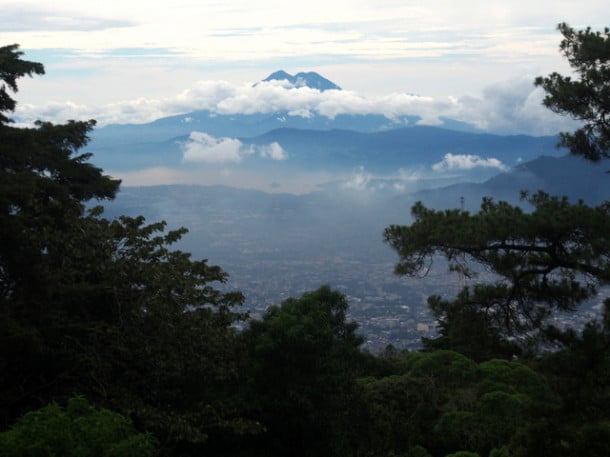
My first night in El Salvador, at a locally inspired hotel dinner, I lost my notebook. Long-hand musings, names, numbers, bars/cafes to check out in Berlin and Brooklyn and Phnom Penh—all gone, just like that.
Had the hotel pupusas really been that good? Had I freely traded in my wherewithal for a finite plate of rich-bean-and-melty-quesillo-filled corn tortilla piled high with curtido? El Salvador claims the world’s first and best pupusas, and I like food a whole lot, so it’s possible, but how it happened was not the point. The point was that the rest of my notes aside, I’d lost a full day’s worth of raw, in-the-moment inference from which I was to define El Salvador, both as a curious traveler and for this story. All that experience that I’d traced to paper was lost, and lost for good.
Three nights later, as I sat snug in a rickety old trolley in rickety old Santa Ana (El Salvador’s second-largest city), my face splashed with the splintered flashes of patchwork fireworks lighting up the cobblestones of the city’s main plaza, I was still without my notebook as I reflected on my time in this tiny-yet-extraordinary country. Then: a loud “Bang!” and a flash against the mint green theater, and there was Beatriz, one of my incredible contacts from El Salvador tourism. And with her, news suited only for a country whose name translates in English as “The Republic of the Savior”: My notebook had been recovered, and I could pick it up at the hotel upon my return.
I did just that, of course, and found my earlier musings just as I’d left them. The life I’d lived, as a writer, between book covers had been restored.
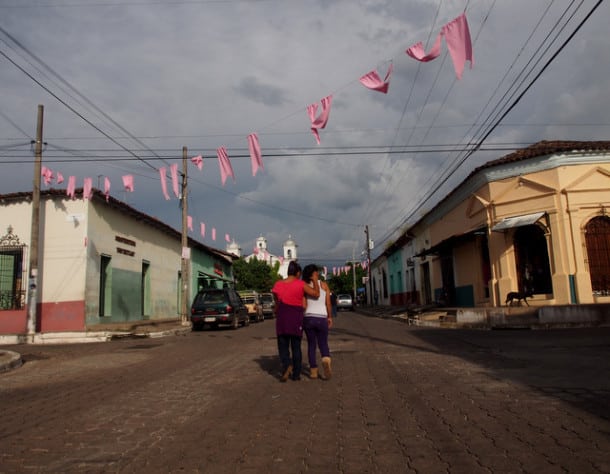
And so was highlighted the most defining of all my El Salvador takeaways: the sincerest, most buoyant kindness of its people. Through three days of dead-ends, Beatriz and the many others representing their country at its first-ever Travel Market had pressed on in the search for my notebook. “The people were nice” is a well-worn cliché in travel, but I’m really not sure I could list many other countries whose average countryman, at least from my experiences with them, would have gone so far above and beyond the call of duty, and I say that with three-plus days’ worth of anecdotes to back me up.
The local merchants on the pier in surfing mecca La Libertad smiled and engaged my group of camera-wielding first-timers like friends. One guy switched hats with me (that’s a good thing), and another quietly insisted one of my travel companions take a complimentary souvenir from his stall. Our guides were unflinchingly open about their lives and experiences during the violence-stained civil war years—1979 to 1992—and proud of their people’s resilience, heart and solidarity in emerging on the other side of it. A woman I am remembering as the theater director in Santa Ana snuck us into a show before dinner our last night, and on and on.
To say it again: The people (known as Salvadorans) are great, but there’s a whole lot more to report back on. I found my notebook, after all. Here’s my top 15 from El Salvador (to know, see, do, reasons to go, whatever):

1. It’s just so green
The first thing I noted upon my arrival: The country is just so goddamned green. It’s incredible. Flying in, I noticed it. Driving to my hotel from the airport, I really noticed it. Over the next three days, I found the color of life itself as bright and sparkling in El Salvador as I’ve ever seen it. Inside of the cities (San Salvador in particular), its glow is muted, but everywhere else, your field of vision is never without full plumes of emerald, evergreen and the rest.
Apparently, just under 15% of the country is blanketed in forest, and that number is actually shrinking as the country continues to battle deforestation. This feels low to me, but more importantly, it doesn’t change the fact that El Salvador felt green to me. Neighboring Costa Rica’s own feats of ecology have driven to it to a large lead in the Central American tourism race. In that department, at least relative to overall land mass, El Salvador seems primed as an adventuring and ecological hotspot.
2. “The 45-minute country”
Nestled between Guatemala, Honduras and the Pacific Ocean, El Salvador is the smallest country in Central America at a little over 8,000 square miles. Relatively speaking, that’s somewhere between the sizes of Delaware and Massachusetts. It’s also the most densely populated Central American nation, but that distinction only brings the total population up to about six million (20% of whom, according to the CIA World Factbook, live abroad). Without much size and manpower (among other things), the country has remained relatively elusive on the world stage.
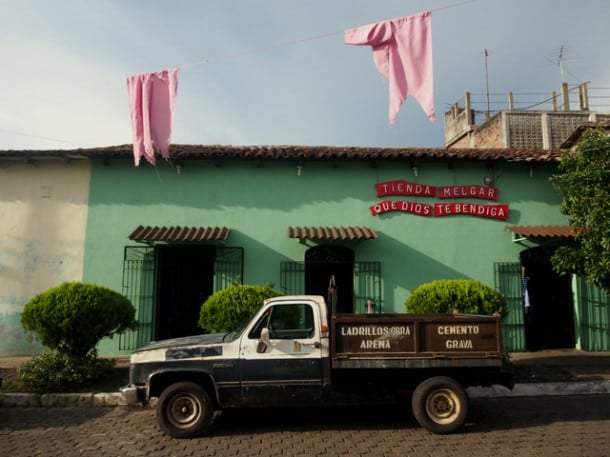
But domestically, small has its benefits. El Salvador has been referred to more than once as “the 45-minute country” because everything within its borders is no more than a 45-minute drive away. The urban treasures of capital San Salvador, the beaches of La Libertad, the small-time charm of Suchitoto, Mayan ruins like Joya de Cerén, volcanic craters like El Boquerón (whose peak offers views of about 2/3 of the country on a clear day), sea turtle releasing—none is more than 45 minutes to an hour from any other. It’s a diverse place, and its size makes it all that much more accessible.
3. Direct flights to San Salvador from the U.S. (and Canada)
You might think that flying to a country as small as El Salvador would involve a nightmarish mess of connections and frighteningly old planes. Not so. In 2009, San Salvador-rooted TACA Airlines merged with the Colombia-based Avianca, and San Salvador’s Comalapa International Airport (SAL) became an Avianca hub. Today under the Avianca name, the TACA-operated fleet now offers direct flights to and from 11 U.S. and Canadian cities (map here):
- New York
- Newark
- Washington D.C.
- Orlando
- Miami
- Chicago
- Houston
- Dallas/Ft. Worth
- Los Angeles
- San Francisco
- Toronto
Because Avianca is part of the Star Alliance, real and worthwhile miles can be accrued and spent on all these flights. Also, from what I can figure out, Atlanta (by Delta) and Fort Lauderdale (by Spirit) are also serviced with direct flights to El Salvador.
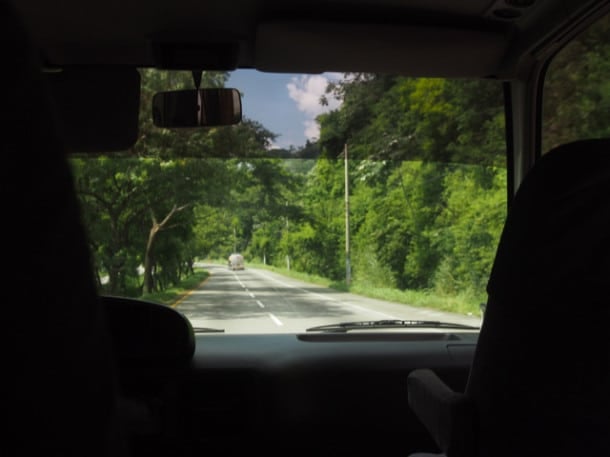
San Salvador proper (an area that even locals have a hard time defining) is about 15 minutes from the airport. Interestingly, though, the airport—which is closer to the Pacific—greets visitors just a few feet above sea level while the city it services towers about 700 feet above. For this reason, it may be warmer just outside the airport than in San Salvador (it was when I arrived).
SAL is not the most visibly striking airport around, and it has a bit of a weathered, Central American feel, but go through security once on your way back to America and you’ll understand that security is no joke here. After completing what seemed to be normal security procedure, all New York-bound passengers were required to go through a three-step security check at the gate involving full bag searches, body pat-downs, and more. It was as thorough as I’ve ever seen.
Helpful tip: There’s a café by Gate 17 called The Coffee Cup that offers free Wi-Fi to anyone who buys something.
4. Bring your Benjamins, but not literally because it’s insanely cheap
Conveniently, the national currency in El Salvador is the U.S. Dollar. Up until 2001, and for more than a century prior, it had been the colón, but a period of stable economic growth in the 90s inspired the government to transition into the world’s currency. It’s more specifically the currency of America, and man, do we have buying power in El Salvador. There’s no exchange rate, obviously—things are just really cheap!

5. Visas and customs
U.S. citizens can (and must) purchase a visa for $10 at the airport upon arrival. Simple as that.
Customs includes an interesting procedural element. Once you’ve landed at SAL, grabbed your bags and paid for your visa, you’ll find yourself funneled into a (usually short) customs line, which culminates with you hitting a button affixed to what appears to be a traffic light. What’s happening, of course, is a quite brilliant experiment in randomization. Once you’ve pressed the button, the machine will spit back one of two illuminated responses—the equivalents of “Stop” and “Go.” If you get “Stop,” you’ve won a bag search. If you get “Go,” you’re all set to get on your way.
6. The “Valley of Hammocks”
Not two hours into my visit, as I was already napping, a 6.5-magnitude earthquake struck off the Guatemalan coast. I awoke to my hotel room shaking, which in my half-asleep state was quite surreal. To that point, I’d never experienced an earthquake in person. A quick Google search yielded assurances that the damage was extremely limited, and it ended up as a pretty thrilling experience. For all who live in El Salvador, which lies in one of the most seismologically active regions on our planet, the wake-up would not have been thrilling. Maybe boring, or terrifying, but not thrilling.
That the area around San Salvador was once known by the colonizing Spanish as the “Valley of the Hammocks” is no coincidence. The earth has a reputation for instability here (that’s what happens when three tectonic plates converge), and as our guide told us bluntly, every citizen has experienced at least one major earthquake and volcanic eruption in his or her life. That’s just how it goes.
Including the one it shares with Guatemala, El Salvador lays claim to 26 volcanoes, about a third of which are active. All, meanwhile, are stunning. The aforementioned green runs bountifully up and down the slopes like waves. The landscape is Jurassic—warm, verdant, flowing and unbridled—and particularly from above, an achievement in natural beauty.
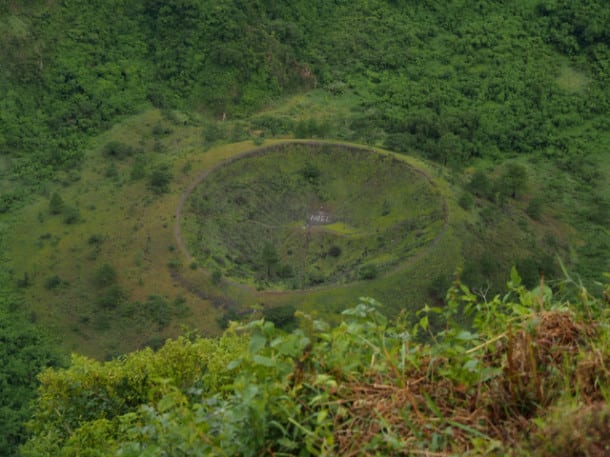
One of the best and most accessible vantage points into this petri dish (and an adventure in itself) can be found in El Boquerón National Park. About 20 minutes outside of San Salvador, the park is either a short drive or considerably-longer-hour hike up the 6,000-foot San Salvador volcano. Descending into park centerpiece El Boquerón (“mouth”) crater is itself a four-hour hike if you’re interested in exceedingly long, active days; if not, the rim and its park-defining views are a quick and winding 10-minute walk from the parking lot. Either way, make sure to take a close look at El Boqueróncito, the little crater inside the big one, as there’s usually something (words, symbols) carved in its dirt floor. For my visit, it was “NOEL.”
The big crater is more than a mile wide, and again, incredibly green, but in a way, the greens weave themselves a little too far out of definition. I found the views of San Salvador cradled by more volcanoes (from a lookout by the parking lot) to be more impressive. In any case, it’s all worth checking out as entry is literally $1, unless you’re eight or younger, in which case it’s free. Cars and vehicles can park for $3. The park is also open seven days a week, from 8 am – 5 pm.
7. The “Pompeii of the Americas”
Some Salvadoran volcanic experiences were worse than others. UNESCO World Heritage Site Joya de Cerén commemorates a pre-Hispanic agricultural community swallowed whole by an eruption in 600 A.D. In burying the town, the Laguna Caldera volcano, much like Vesuvius with Pompeii in 70 A.D., froze the town in time.
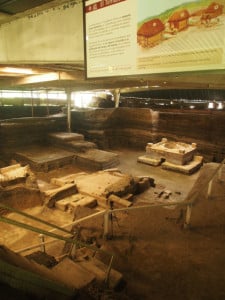
The result is an unparalleled window into the lives of pre-Hispanic (and Mayan) commoners and one of the most valuable archaeological sites in the world. Until the (unintentional) discovery of Joya de Cerén in 1976, our understanding of these earlier times was limited to what we knew of the royals, whose ornate tombs at sites like Tikal in Guatemala offered little insight into life at the lower social rungs.
Joya de Cerén, meanwhile, was like a commoner treasure chest. Now excavated from beneath 14 layers of ash are living structures, storehouses, a sauna, tools, ceramics and much more. The evidence so far suggests that everyone made it out in time (no bodies have been found), but the escape was so quick that traces of beans, from meals being eaten at the time of the eruption, have been discovered in bowls.
Needless to say, historians were psyched when a bulldozer drove into and uncovered the site by mistake.
Tickets again are sold at Salvadoran prices: $3 for foreigner entrance, $1 for car parking and $3 for bus parking. It’s closed on Monday, but is open 8 am – 4 pm the rest of the week. The entrance fee includes access the site’s interesting museum as well.
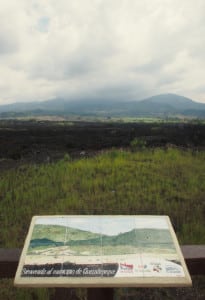
8. Joyas Negras lava field
The natural world reigns powerful and supreme in El Salvador, and the land is pocked with the scars to prove it. The Joyas Negras lookout offers a chance to admire one of the most intrusive. On the side of the road to San Salvador back from Joya de Cerén, you’ll see the lava, long since cooled into sprawling igneous rock (3,000+ square ft), on either side. You can’t miss it. What you’re privy to here, particularly if you pull off to look out from the outlook, is what remains from the devastating 1917 eruption of the San Salvador volcano (from its El Boquerón crater). Don’t carve out more than 30 minutes for a stop, but do stop—it’s pretty wild.
9. Surfing
El Salvador is one of the five or so best surfing destinations on the planet. That was news to me when I heard it, as my surfing resume to that point included only one attempt during which I almost died. But the waves break just so here, not with unusual height but extraordinary consistency, and the surfing world is already well aware.
La Libertad, like everything else less than an hour’s drive from San Salvador, is the epicenter of it all. At breaks like Punta Roca, El Sunzal and El Tunco, the pace of life is dialed back as if to make each ride last a little longer. Shoes come off. Beers and smoothies flow freely, and the soft twang of a guitar seems to ricochet, day and night, without end through the warm, lazy air. This is a more literal valley of the hammocks, which droop heavy with contented riders all along the beach. Bring your own hammock (you can also rent) and you can grab hooks for as little as $1 a night—the right price in a place where fun really can be cheap.
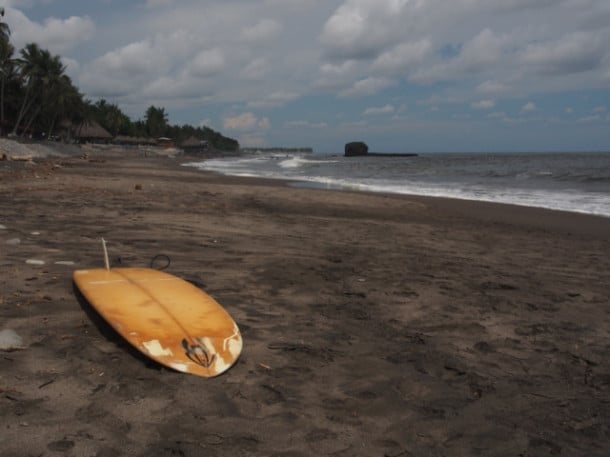
The vibes are potent, and intoxicating, and you really end up wanting to stay longer, particularly in El Tunco. One of my travel companions noted he’d love to return to spend a few months there writing a book. But really, it should probably be a surfing book, because the surfing is incredible. Thick, glassy, 6-foot barrels roll in every 30 seconds throughout the year. They are suitably sized for beginners (you can take a lesson like I did), and suitably perfect for pros (as seen in last year’s Quiksilver Cup and this summer’s Reef Pro El Salvador). As a final thought, Steve-O recently spent a month here surfing, and that seemed to excite the locals quite a bit.
10. Good, cheap, wacky food
Like in most of Latin America, the food in El Salvador is pretty great. Pupusas are likely king, and they’re everywhere. Order (buy) them with cheese, bean and chicharrón (known as a pupusa revuelta), with just cheese, or pretty much however you want, and you won’t be disappointed. And don’t forget the curtido on top.
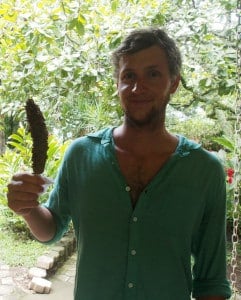
In Suchitoto, we witnessed a pupusa tortilla machine for public use. Locals had to pay some negligible amount to schedule themselves in, but the machine was at least on one axis a means of facilitating good, cheap pupusas. As a fan of pupusas, and in general of culinary pride, I chose to see this as pupusas driving the economy and/or general happiness.
Pupusas are cheap, particularly on the street, so you’re bound to have money left over. Luckily, everything else is cheap too, and usually pretty good. Corn, cheese, poultry and local veggies factor heavily into the diet, which yields a long list of starchy but delicious eats. A little more adventurous are the slew of street treats—often slung out of what appear to be recycled shop projects, strewn together with splintered wood, whatever paint was available and the entrepreneurial spirit. Some were better than others, but I really enjoyed how often I got the chance to try something new for literal pocket change, like:
- Raspado – shaved ice, served with fruit syrups and often topped with condensed milk; mine was shaved on the beach by a young girl with a a machete
- Mangonada – mango juice frozen into a popsicle and dipped in more mango juice with chili powder and other spices; other flavors like strawberry (fresada) are available too, but the mango one was amazing
- No idea what it was called, but a frozen banana on a stick dipped in chocolate and Cocoa Krispies (UPDATE: It’s called a chocobanano; thanks, anonymous commenter!)
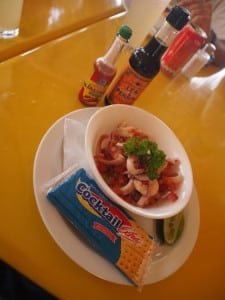
11. They love Worcestershire sauce
This was a twist. Pretty much every restaurant I dined at supplied a bottle each of Worcestershire sauce and hot sauce each to match every offering of salt and pepper. It was everywhere (and excellent on ceviche), and when I pressed, I found that per capita, El Salvador is the largest consumer of Worcestershire sauce in the world. What!
12. Suchitoto
I love Latin America because of towns like this one. The beaten, cobblestone roads connect, like they must always have, colonial-era churches to shops with no doors to a main plaza that feels like the top of the town family tree. Pastel shades of green and yellow and lavender drip from every wall as though splashed with a new coat each morning. Mangonadas are sold by two people out of space the size of two people that also carries old DVD copies of Blade Runner and Stepmom and something in Spanish from 1978. It is chaotic, colorful and still so relaxing.
Suchitoto (which means something like “flower bird” in the old Nahuatl language) feels like the first day of spring everyday, and it’s amazing place to walk around. Stunning views of the artificial Suchitlán Lake, the largest body of freshwater in El Salvador, are close, and scars and stories of the civil war find life in the homes still standing more than twenty years after the peace settlement.
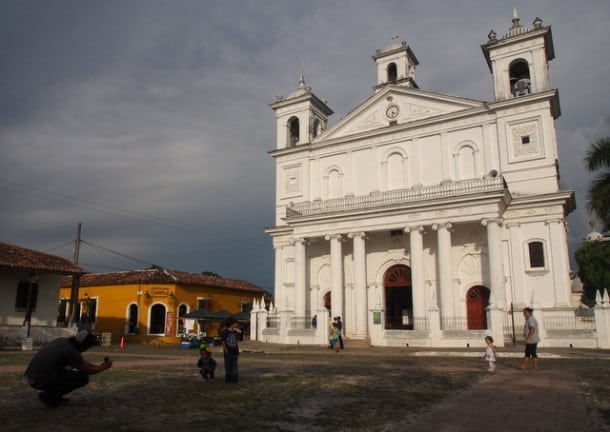
Santa Lucia Church in the main plaza is somewhat plain on the inside (by European standards at least), but the dazzling white exterior wears its ties to the city it serves in a pretty cool way. The domes of all three of its belltowers are covered in white plates and bowls from a local couple’s wedding, which it could not have afforded if not for the couple’s generous (?) offer to give the church their dishes. They blend in if you’re not focusing, but if you look for them, you’ll see them.
13. Sea turtles!
El Salvador’s waters, and so beaches as well, are home to four main species of sea turtle: hawksbills, Olive Ridleys, leatherbacks, and greens. The different nesting seasons are kind of shelved on top of one another, and so from about May to January, much of the Salvadoran-Pacific coastline becomes ground zero for one of the animal kingdom’s most challenging assignments: survive, as a baby sea turtle, from your egg on the beach to birth to the deep water.
Fortunately, money and direction from USAID and the efforts of FUNZEL—a Salvadoran zoological protection non-profit—have collectively installed a mediating mechanism to increase the animals’ odds of survival. Tortugueros (which I’m pretty sure translates to “turtlers”) work 24/7 during breeding season collecting eggs, assisting the mothers, incubating and monitoring eggs—and of course releasing the babies into the water, an experience that we non-turtlers can be a part of.
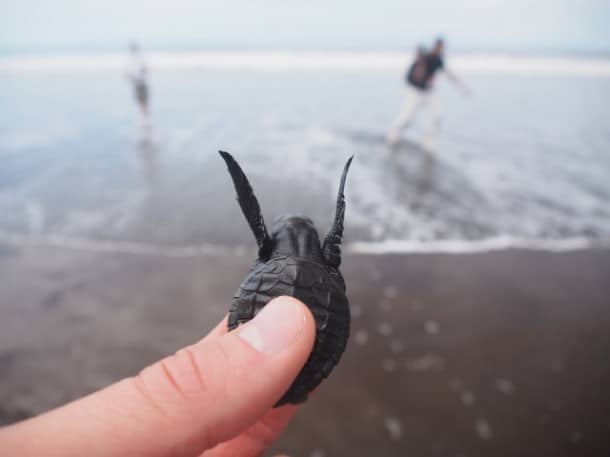
And it’s a pretty cool experience, and free (though donations are encouraged). My group fostered ecological balance at a facility on a beach in La Libertad, but your options here, at least in season, stretch the full coastline. Most tour operators can help find the right match, as can (if your Spanish is okay) the FUNZEL website.

14. The flag is awesome, and it represents…
I found the flag of El Salvador to be cool before visiting, and the proud display of light-blue and white above restaurants and across the chests of futbol fans only accentuated my feelings. The flag has three stripes, in a blue-white-blue pattern, with a national coat of arms in the middle. The two blue stripes represent the Pacific Ocean and Caribbean Sea on either side (though the country does not border the Caribbean), and the white represents the land in the middle as well as peace and prosperity.
15. Where to stay
As tourist numbers continue to rise in El Salvador—now more than 20 years removed from war-drawn volatility—so too will tourist prices. For now, though, it’s relatively-to-insanely cheap top-to bottom. If you’re going the super-budget route, then head for the hammock hooks and hostels of El Tunco. (You may never leave, so have fun.) But a few price brackets higher, there are plenty of hotel options (including a few real gems) offering great value for your money. In that sense, at least, now’s the time to go, and for when you do:
- Real InterContinental San Salvador, San Salvador – It’s an InterContinental, and it’s run like one. Word is that the service is the best in the city. The beds are really comfortable, as well, but outside of that there wasn’t anything particularly outstanding about my experience here—it’s just solid, comfortable and a great value. The location is pretty central, too, though I was told there were less desirable parts of the city fairly close by.
- La Posada de Suchitlán, Suchitoto – In Suchitoto, whose vibes I enjoyed more than San Salvador’s, this is a nice escape. It’s a little bit off the main square (which is tiny anyway), which adds to the serenity, but its best feature has to be its incredible terrace, which looks out over spectacularly earthly Lake Suchitlán. Villas are available, but even the standard rooms feel more rustic and traditionally Salvadoran.
- Hotel Los Almendros de San Lorenzo, Suchitoto – Also in Suchitoto, this place would probably be my choice next time. It may not have the views of La Posada de Suchitlán, but it checks pretty much every other Salvadoran box. As a restored 200-year-old colonial hacienda, it’s luxuriously rustic and authentic. Its modest size benefits greatly from the layout, which enhances feelings of intimacy and adventure, and the owner was the embodiment of the kind, considerate and proud countryman I found so characteristic of this fairly unknown country. Villas and standard rooms are also available here—as is a really delicious restaurant.
- Casa de Mar, El Sunzal, La Libertad – I’d probably opt for a hostel in El Tunco, but if you’re looking for a real hotel experience in La Libertad, this may be your spot. It’s like a palatial Salvadoran treehouse, with rooms wedged like jenga pieces into the rocky cliffs that lead into the beach. There’s a great pool and terrace, and in some rooms, balconies with rock-cut hot tubs and ocean views. In fact the views here are awesome across the board, and so even if you don’t sleep here, make sure to stop by the hotel’s restaurant, Café Sunzal, for lunch. With good ceviche, good beer and great views of world-class surfing below, you’ll find yourself loving life in El Salvador.
For even more on El Salvador, check out their travel-dedicated website here.

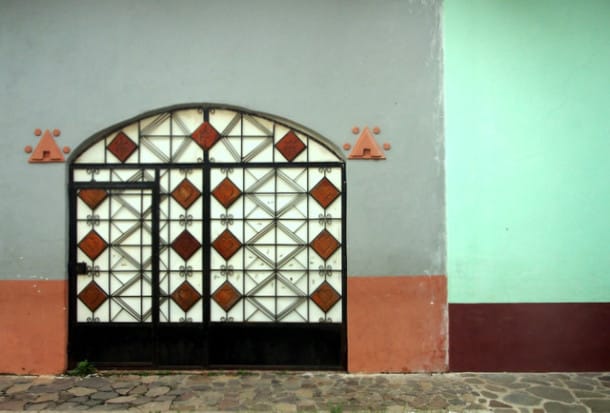
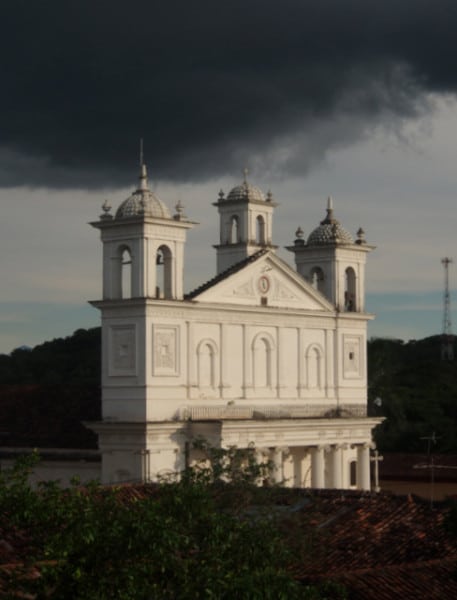
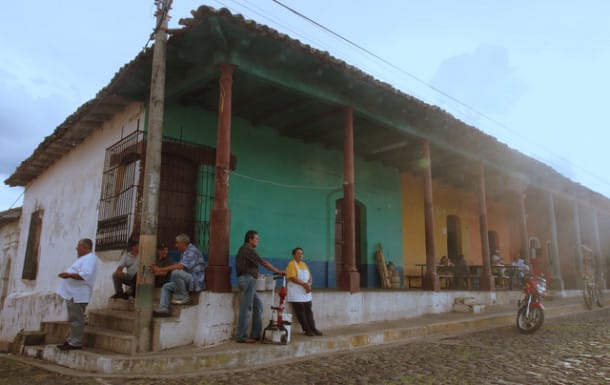
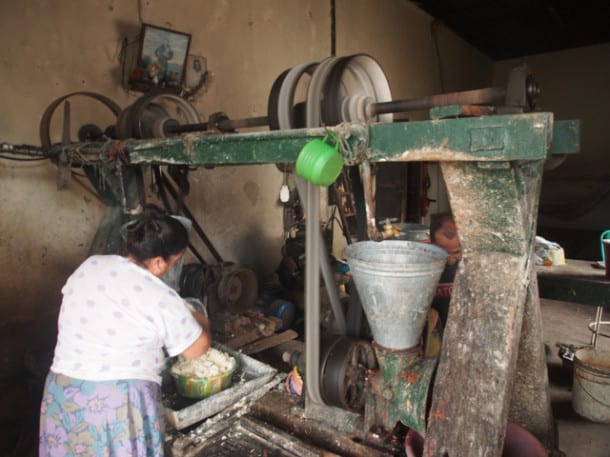
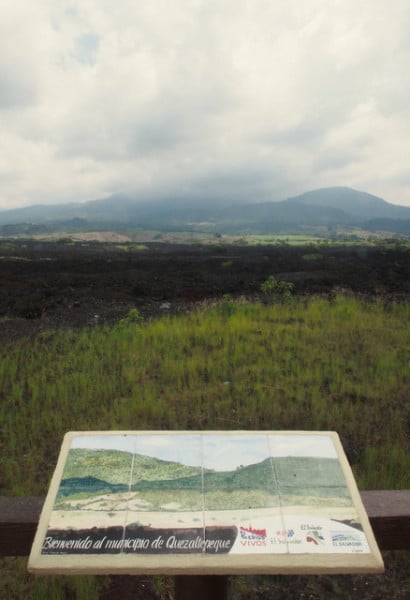
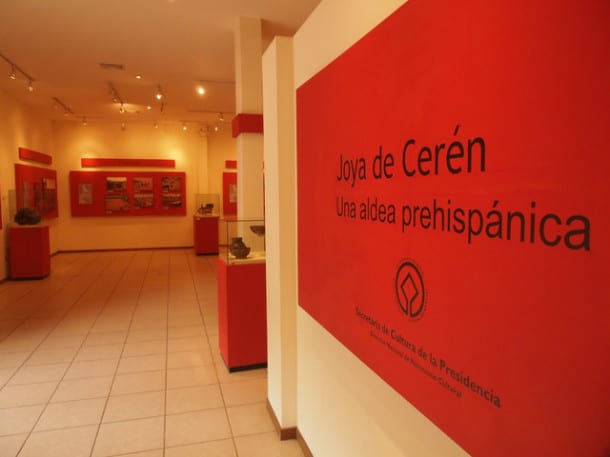
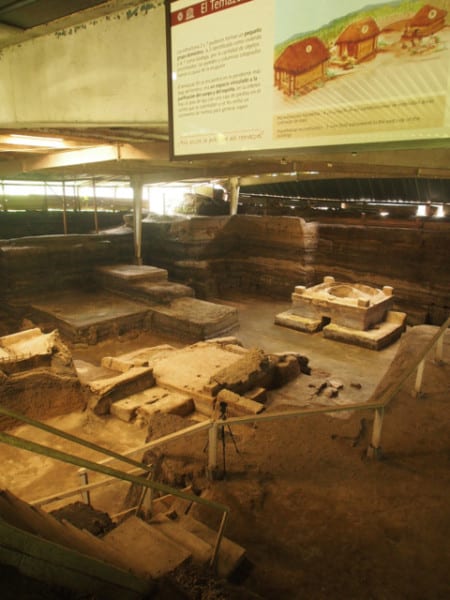

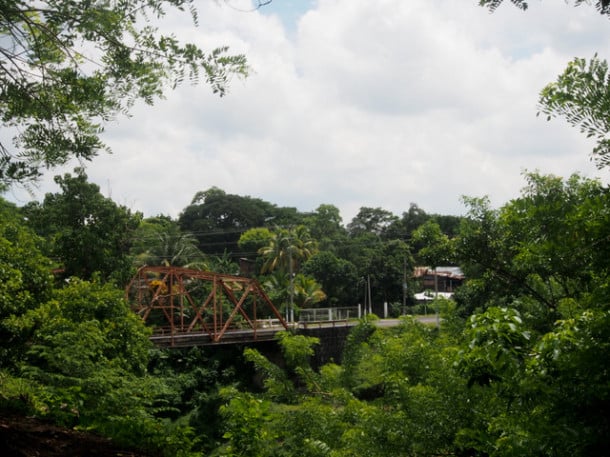

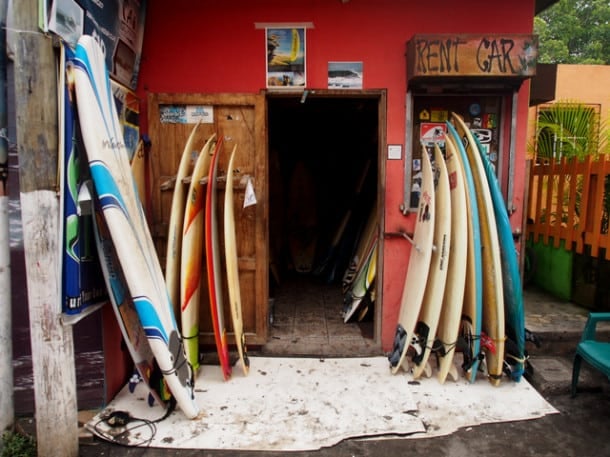

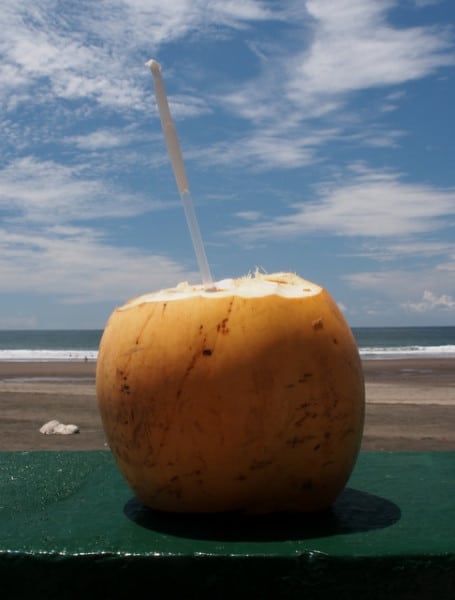
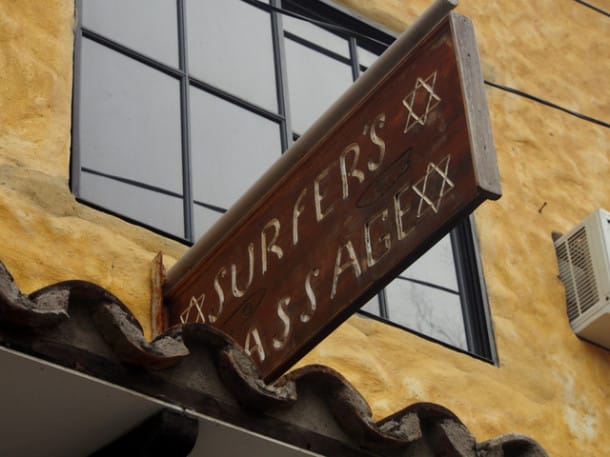
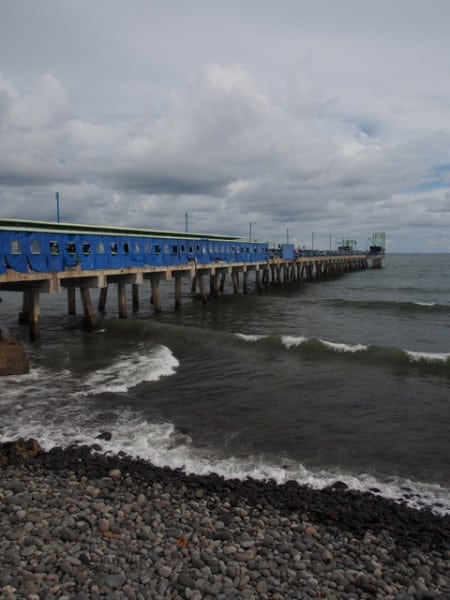
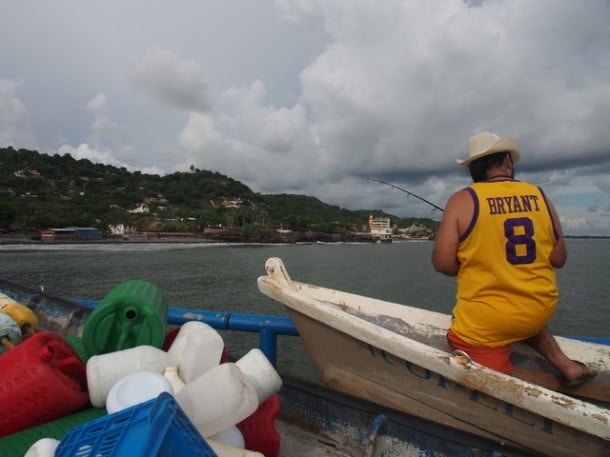
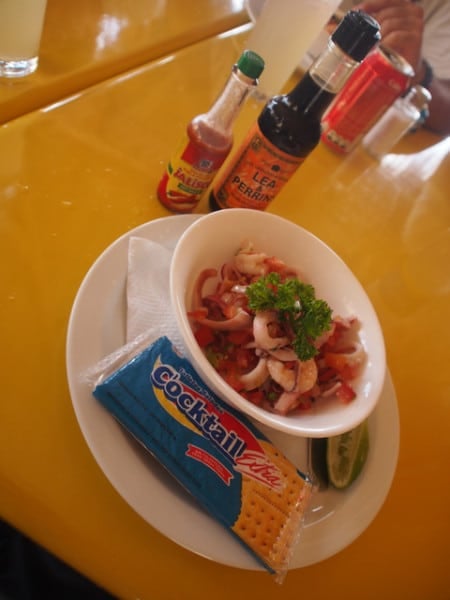
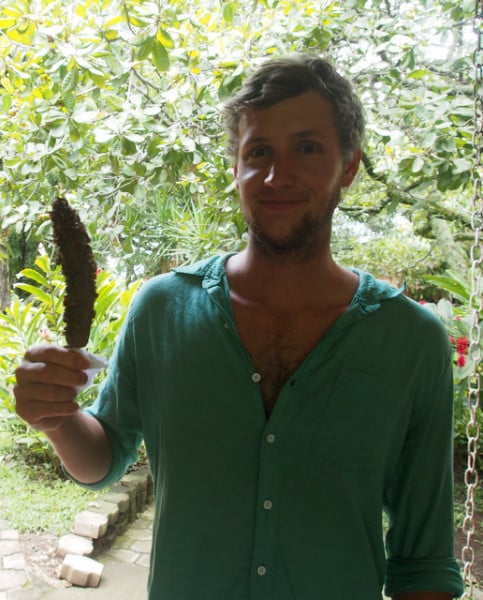
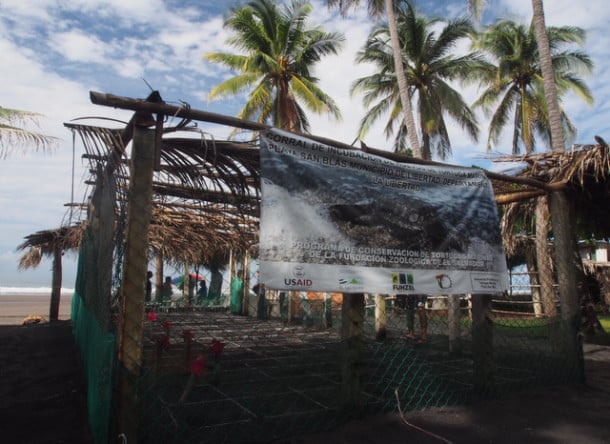
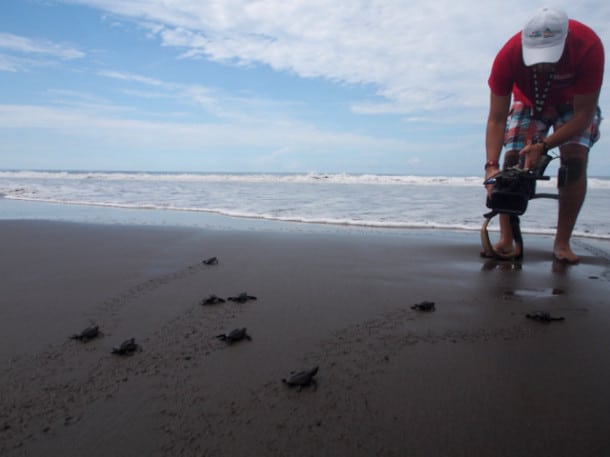
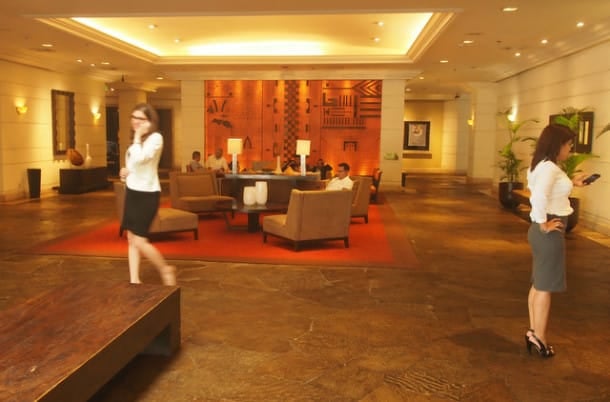
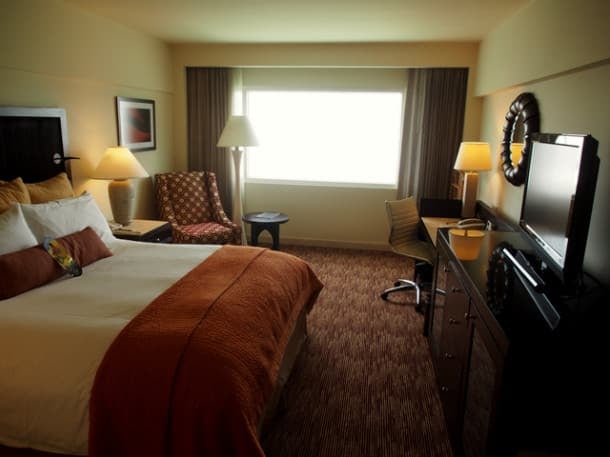
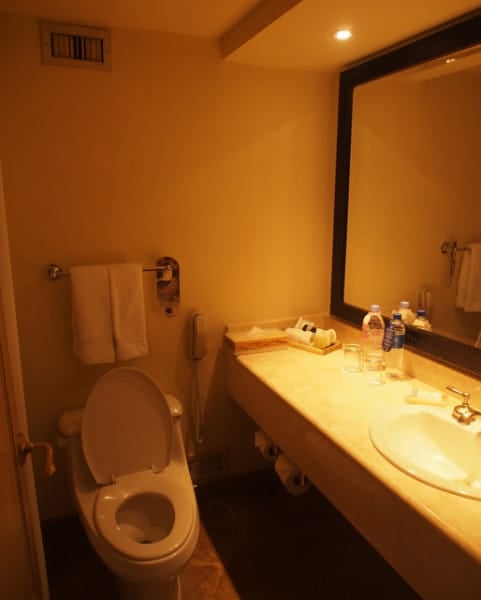
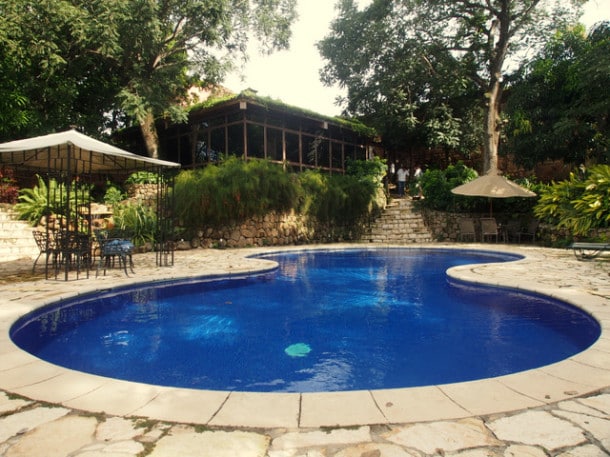
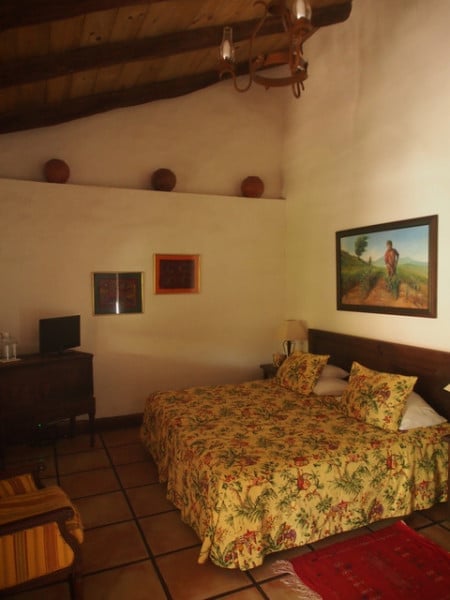
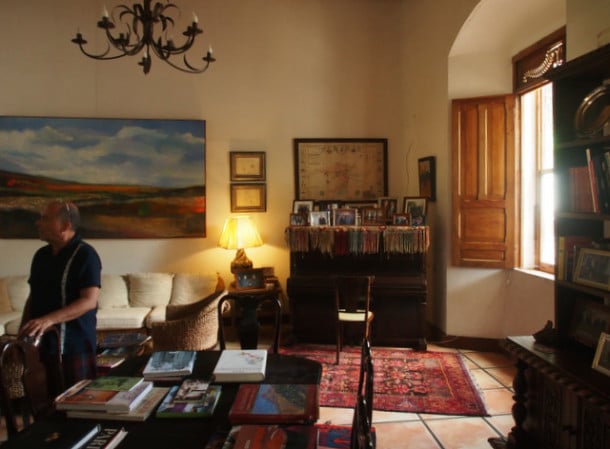
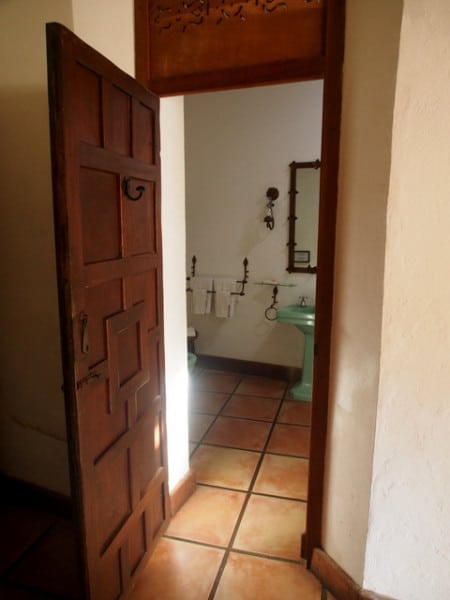
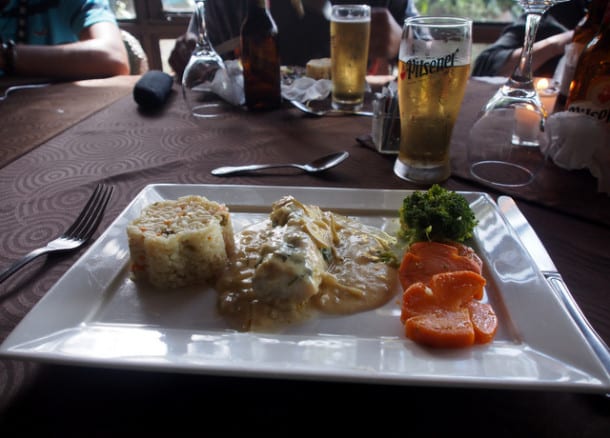
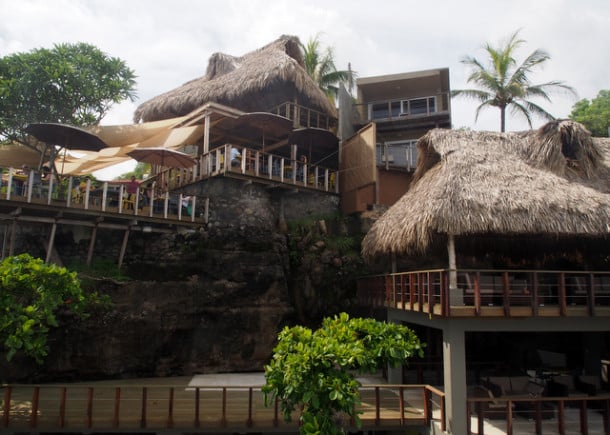
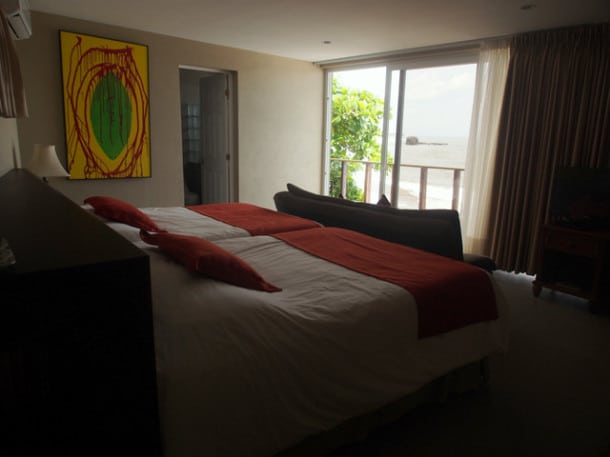




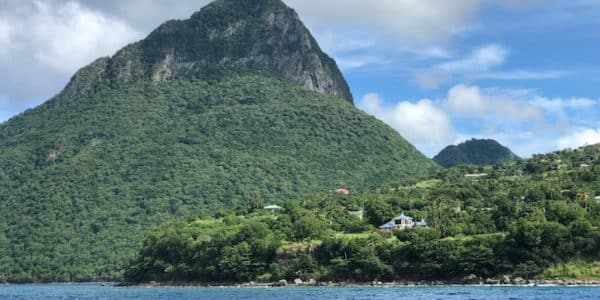
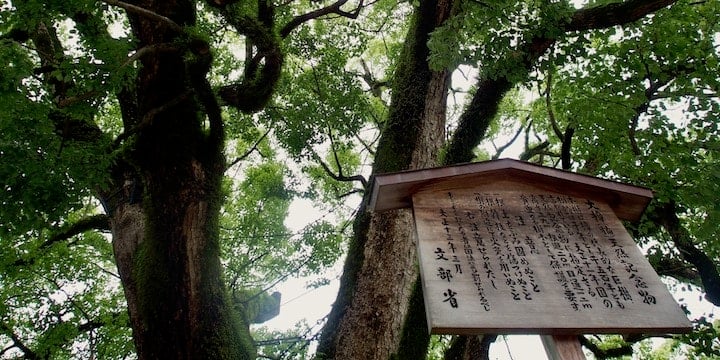
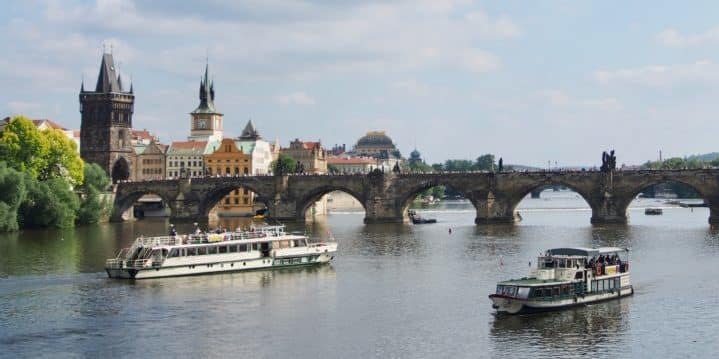
Great to find your blog and nice to go through this post. The information shared here on El Salvador is useful and valuable, surely will take it into consideration. Continue sharing such post. Thanks a lot for sharing.
Happy to hear it, Angela. Thanks for reading!
The frozen banana with chocolate is called chocobanano :-P
Thank you!
I would be completely remiss not to highly, highly recommend a teeny tiny boutique hotel I stayed at in the Meanguera Gulf. A serious treasure, it would be impossible not to enjoy. Already planning my second trip! http://triptease.com/el-salvador/hotels/hotel-la-joya-del-golfo-hammock-a-book-21985
Oops, I meant Island Meanguera, and the Fonseca Gulf!
Looks amazing. Thanks for the rec, Carolyn!
I have been close to going to El Salvador three times. Been to Costa Rica and nearby Guatemala exploring the coasts,Cloud Forests and eco lodges for our company. You inspire me to not miss it next time. With the politics its hard to convince older clients to go there. Young adventurous types don’t hesitate.
El Salvador has so much to offer and you cover many of the best known tourist places. Great post and I hope you’ll attract more people to this unknown beautiful country :)